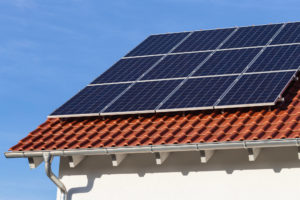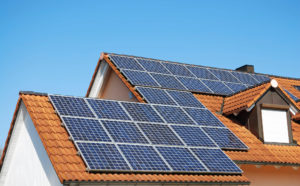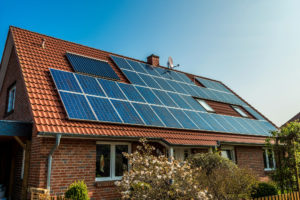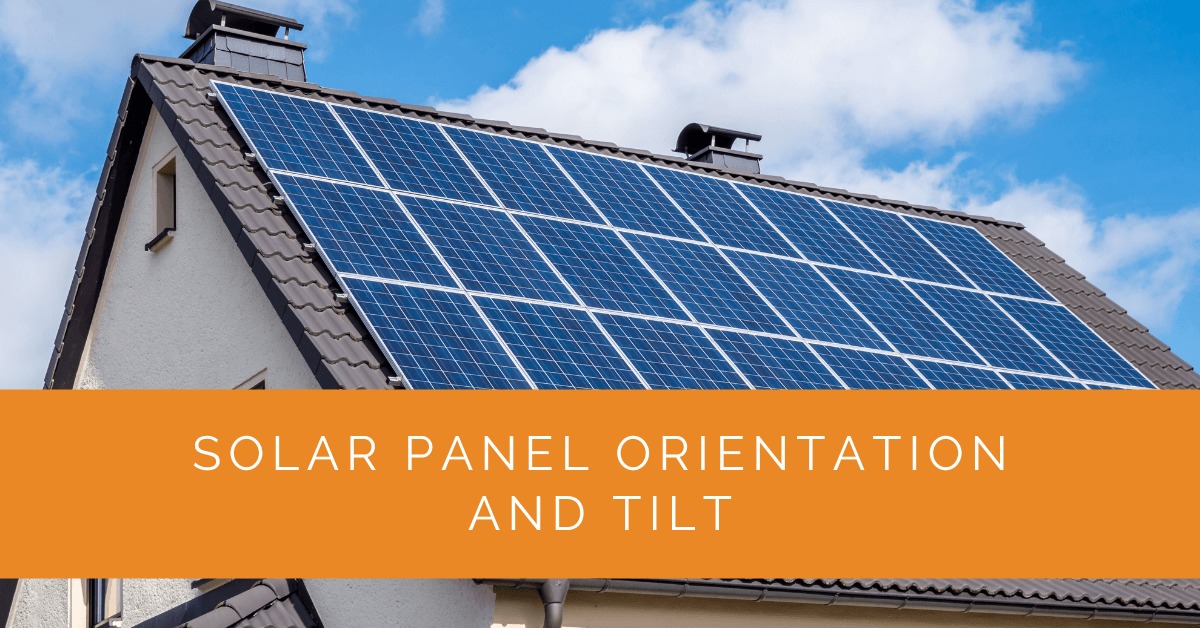Solar panels lie at the core of any solar energy system, and how they are positioned and tilted significantly impacts their capacity to harness solar power efficiently. In this comprehensive guide, we will delve into the intricacies of optimizing solar panel orientation and tilt, ensuring you make the most out of your solar power system.
Contents
- 1 Key Takeaways
- 2 Understanding Solar Panel Orientation
- 3 Finding the Optimal Angle: Solar Panel Tilt
- 4 Solar Panel Tilt Angle Calculator
- 5 Benefits of Optimizing Solar Panel Orientation and Tilt
- 6 The Role of Solar Trackers
- 7 Factors to Consider When Choosing Orientation and Tilt
- 8 How to Determine the Best Direction for Solar Panels
- 9 Installing Solar Panels with the Right Orientation and Tilt
- 10 Optimizing for Winter: Adjusting Tilt for Maximum Efficiency
- 11 Realizing the Full Potential: Solar Panel Placement
- 12 Monitoring and Maintaining Your Solar Panel Setup
- 13 Case Study: Optimizing Solar Panel Orientation and Tilt for Maximum Efficiency
- 14 Expert Insights From Our Solar Panel Installers About Solar Panel Orientation and Tilt
- 15 Experience Solar Excellence with Us!
- 16 Conclusion
Key Takeaways
- Proper orientation and tilt of solar panels are crucial for maximizing energy production, with south-facing panels and an optimal tilt angle being generally preferred.
- Solar trackers can significantly boost energy yield, but they come with higher costs and maintenance requirements, choosing between fixed-tilt panels and trackers dependent on individual goals and budgets.
- Regular maintenance, including cleaning, inspection, and shading management, is essential for ensuring the long-term efficiency of your solar panel system and maximizing its environmental and financial benefits.
Understanding Solar Panel Orientation
The Basics of Panel Orientation
Solar panel orientation, which refers to the direction they face, is a crucial factor in their efficiency. Let’s start by grasping the fundamentals of panel orientation, the initial step in optimizing your solar system’s performance.
Selecting the right orientation for your solar panels revolves around cardinal points. In the northern hemisphere, south-facing panels are usually the best choice, while in the southern hemisphere, north-facing panels are ideal. However, east and west-facing orientations can be suitable if you have specific energy production requirements or structural constraints.
Factors Influencing Panel Orientation
Explore the various factors that influence the choice of orientation for your solar panels, including geographical location, solar energy goals, and local climate conditions.
Geographical location plays a pivotal role in determining the optimal orientation. For northern hemisphere locations, south-facing panels capture the most sunlight throughout the day. Conversely, southern hemisphere locations benefit from north-facing panels. Nevertheless, the ideal orientation may deviate from these norms based on your location’s unique characteristics.
Your solar energy goals are equally significant. You’ll want panels optimized for peak sunlight hours to maximize energy production. Conversely, an east-west orientation might be more suitable if you intend to balance energy generation throughout the day.
Additional considerations include local climate conditions, such as prevailing winds and seasonal sun paths. Tailoring your solar panel orientation to these factors ensures efficiency in varying conditions.
Finding the Optimal Angle: Solar Panel Tilt
The Crucial Role of Tilt Angle
The angle at which solar panels are installed, known as the tilt angle, is another critical aspect of optimization. Let’s explore why getting the tilt angle right is essential for your solar power system.
The tilt angle significantly impacts how effectively panels capture sunlight throughout the day and across seasons. To achieve optimal energy production, you must adjust the tilt angle to suit your location’s latitude and seasonal variations in the sun’s path.
Calculating the Optimal Tilt Angle
Learn how to calculate the optimal tilt angle for your solar panels, ensuring they receive the right amount of sunlight throughout the year and across seasons.
Calculating the optimal tilt angle hinges on your location’s latitude and solar energy goals. It involves using formulas or online tools that consider the sun’s angle at different times of the year.
A lower tilt angle (closer to horizontal) may suffice for locations near the equator, as the sun remains relatively high year-round. Conversely, regions with significant seasonal changes may require steeper tilt angles to capture low-angle winter sunlight effectively.
Solar Panel Tilt Angle Calculator
Enter your latitude to find the best tilt angle for your solar panels.
Benefits of Optimizing Solar Panel Orientation and Tilt
Increased Energy Production
Discover how optimizing your solar panels’ orientation and tilt can lead to significantly increased energy production, ultimately reducing energy costs and environmental impact.
Optimizing solar panel orientation and tilt yields one of the most significant benefits: increased energy production. When panels face the sun optimally and have the right tilt angle, they capture more sunlight, resulting in higher electricity generation.
This heightened energy production reduces reliance on conventional energy sources and lowers energy bills. Additionally, it contributes to substantially reducing greenhouse gas emissions, making your property more environmentally friendly.
Rapid Return on Investment (ROI)
Explore how an efficiently oriented and tilted solar panel setup can accelerate your return on investment, making your solar power system a smart financial choice.
Solar panel installation is an investment, and optimizing your panel orientation and tilt ensures a quicker return on investment. Maximizing energy production can generate more electricity for personal use and potentially sell excess energy back to the grid, resulting in significant savings over time.
A shorter payback period means you start enjoying the financial benefits of your solar system sooner. Moreover, solar panels have long lifespans, so optimizing their performance guarantees cost savings and energy generation for decades.

The Role of Solar Trackers
Introduction to Solar Trackers
Solar trackers are advanced systems that automatically adjust the orientation and tilt of solar panels to follow the sun’s path throughout the day. Learn how solar trackers can elevate your solar energy production.
Solar trackers are sophisticated mechanisms that enhance solar panel performance by continuously adjusting their orientation and tilt to track the sun’s path across the sky. These tracking systems come in various designs, including single-axis and dual-axis trackers, each with advantages.
Benefits of Solar Tracking
Explore the advantages of using solar trackers, including increased energy yield, extended panel lifespan, and potential cost savings.
Solar trackers offer several notable benefits:
- Increased Energy Yield: Solar trackers can boost energy yield by up to 25% compared to fixed-tilt systems. Trackers keep panels aligned with the sun, ensuring maximum sunlight throughout the day.
- Extended Panel Lifespan: Solar trackers can also extend the lifespan of solar panels by reducing temperature-related stress. Trackers prevent hotspots and excessive wear and tear by continually adjusting the panels’ orientation.
- Efficient Use of Space: Solar trackers can maximize energy production using less land or rooftop space than fixed-tilt systems. This efficiency can be especially beneficial in areas with limited space for solar installations.
While solar trackers offer numerous advantages but come with higher upfront costs and maintenance requirements, their suitability depends on your specific solar energy goals and budget considerations.
Factors to Consider When Choosing Orientation and Tilt
Geographical Location
Understand why your geographical location significantly determines the optimal orientation and tilt for your solar panels.
Your geographical location is a primary factor influencing the solar panel orientation and tilt choice. This is because the angle at which the sun’s rays strike the Earth varies depending on your latitude and the time of year.
If you live in the northern hemisphere, your solar panels will receive the most sunlight when oriented toward the true south. Conversely, a true north orientation is ideal if you reside in the southern hemisphere. However, depending on specific circumstances, the optimal orientation may deviate from true south or north.
For locations near the equator, solar panels may benefit from a nearly horizontal tilt angle, as the sun’s path remains relatively high in the sky throughout the year. In contrast, areas with more pronounced seasons may require steeper tilt angles to effectively capture sunlight during winter.
Solar Energy Goals
Align your solar panel orientation and tilt with your energy goals, whether it’s maximizing energy production, achieving energy independence, or reducing your environmental impact.
Your solar energy goals are a crucial consideration when determining the orientation and tilt of your solar panels. These goals can vary widely from one solar system owner to another, and your choices should align with your specific objectives:
- Maximizing Energy Production: If your primary goal is to generate as much electricity as possible, you’ll want to optimize your solar panel orientation and tilt to capture the most sunlight during peak hours.
- Balancing Energy Production: Some solar system owners aim to balance energy generation throughout the day to align with their consumption patterns. In such cases, an east-west orientation may be preferred to capture morning and evening sunlight.
- Energy Independence: If you aim to reduce your reliance on the grid and achieve energy independence, your solar panel orientation and tilt should be tailored to meet your energy needs throughout the year.
- Environmental Impact: Solar energy is known for its environmental benefits. Maximizing energy production through optimal orientation and tilt can reduce your carbon footprint and contribute to a cleaner planet.
Available Space
Consider the available space on your property when determining the orientation and tilt of your solar panels, making the most of the area you have.
The available space on your property is a practical constraint that can influence your choices for solar panel orientation and tilt. Solar panels require a certain amount of space, and using your available area efficiently is essential while complying with local regulations and aesthetics.
When dealing with limited space, you may need to make trade-offs between the ideal orientation and tilt and the number of panels you can install. Sometimes, using solar trackers or adjusting the tilt angle seasonally may be a practical solution to maximize energy production within space constraints.

How to Determine the Best Direction for Solar Panels
Azimuth Angle
Learn about azimuth angles and how they can help you determine the best direction for your solar panels based on location.
The azimuth angle is critical when determining the best direction for your solar panels. It represents the compass direction your panels should face to receive maximum sunlight throughout the day.
For locations in the northern hemisphere, the azimuth angle is typically south. Conversely, for locations in the southern hemisphere, it is north. However, the specific azimuth angle may vary depending on your location and objectives.
The azimuth angle considers the sun’s path across the sky at different times of the day and year. Calculating the correct azimuth angle ensures that your solar panels face the sun optimally, maximizing energy production.
Seasonal Adjustments
Discover the importance of making seasonal adjustments to your solar panel orientation and tilt to account for the sun’s changing position in the sky.
To maintain optimal energy production throughout the year, it’s essential to make seasonal adjustments to your solar panel orientation and tilt. The sun’s path across the sky changes with the seasons, impacting the angle at which sunlight strikes your panels.
In the summer, the sun is higher in the sky, so a slightly shallower tilt angle may be appropriate to effectively capture sunlight. Conversely, during the winter months, when the sun’s path is lower, a steeper tilt angle can help maximize energy production.
These adjustments ensure that your solar panels receive the appropriate sunlight year-round, optimizing your solar energy system’s performance.
Installing Solar Panels with the Right Orientation and Tilt
Professional vs. DIY Installation
Explore the pros and cons of professional solar panel installation versus a do-it-yourself approach to achieving the correct orientation and tilt.
When installing solar panels with the correct orientation and tilt, you have two primary options: professional installation or a do-it-yourself (DIY) approach. Each option has advantages and considerations; your choice will depend on your skills, budget, and goals.
Professional Installation
Professional installation offers several benefits, including:
- Expertise: Solar installers have the knowledge and experience to determine your panels’ optimal orientation and tilt, ensuring maximum energy production.
- Efficiency: Professionals can complete the installation quickly and efficiently, minimizing potential downtime or disruptions.
- Warranty and Guarantees: Most professional installations come with warranties and guarantees, providing your investment peace of mind and protection.
- Compliance: Solar installers are familiar with local building codes and regulations, ensuring that your installation complies with all requirements.
However, professional installation can be more expensive than a DIY approach, so carefully weigh the costs and benefits.
DIY Installation
DIY installation can be cost-effective if you have the necessary skills and experience. It allows you to save on labor costs and gives you full control over the installation process.
If you choose a DIY approach, consider the following:
- Research: Thoroughly research your location’s optimal orientation and tilt to ensure your panels perform efficiently.
- Safety: Safety is paramount during installation. Follow all safety guidelines and take necessary precautions when working on your solar array.
- Permits and Regulations: Be aware of local permits and regulations governing solar installations, and ensure you comply with them.
- Warranty Considerations: Some solar panel manufacturers may require professional installation to maintain warranty coverage. Verify this with your panel manufacturer.
Ultimately, the choice between professional and DIY installation depends on your confidence in your abilities and your budget.
Installation Tips
Receive practical tips for ensuring your solar panels are correctly oriented and tilted during installation, guaranteeing optimal energy production from day one.
Whether you opt for professional installation or choose to install your solar panels yourself, the following tips can help ensure that your panels are correctly oriented and tilted for optimal energy production:
- Accurate Measurements: Measure and align your panels precisely according to the calculated azimuth and tilt angles. Small deviations can significantly affect energy production.
- Use Solar Mounting Hardware: Invest in high-quality solar mounting hardware designed to withstand weather conditions and securely hold your panels in place.
- Double-Check the Angle: Verify the tilt angle using a solar angle finder or inclinometer to ensure it matches the calculated optimal angle.
- Regular Maintenance: Plan regular maintenance to keep your panels clean and debris-free, as dirt and shading can reduce energy production.
- Consider Solar Trackers: If you want to maximize energy production without manually adjusting panel orientation and tilt, explore the option of solar trackers during installation.
Following these installation tips, you can set up your solar panels to operate at peak efficiency from installation.

Optimizing for Winter: Adjusting Tilt for Maximum Efficiency
The Winter Angle
Learn why adjusting the tilt of your solar panels for winter is crucial for maintaining energy production during the colder months and how to do it correctly.
Winter brings shorter days and a lower sun angle, which can impact your solar panel system’s energy production. To combat these challenges and ensure your panels generate electricity effectively during the winter, it’s essential to adjust their tilt angle.
Calculating the Winter Tilt Angle
The winter tilt angle, also known as the winter angle or winter tilt, is the angle at which you should tilt your solar panels during winter. This adjustment allows your panels to capture more sunlight, compensating for the sun’s lower position in the sky.
Calculating the winter tilt angle is relatively straightforward. It involves determining your location’s latitude and subtracting it from 90 degrees (90°). For example, if you live at a latitude of 40 degrees north, your winter tilt angle would be 50 degrees (90° – 40°).
Increasing the tilt angle for the winter months ensures that your panels face the sun more directly, enabling them to capture as much sunlight as possible, even during the shorter days of winter.
Realizing the Full Potential: Solar Panel Placement
Placement Considerations
Discover why the placement of your solar panels on your property is intertwined with their orientation and tilt and how to make the right placement decisions.
The placement of your solar panels on your property is closely linked to their orientation and tilt. Proper placement ensures that your panels receive an unobstructed and consistent supply of sunlight, enhancing their energy production efficiency.
Consider Roof and Ground Mounting
Solar panels can be mounted either on the roof of a building or on the ground, depending on your available space and preferences. Each mounting option comes with its considerations:
Roof Mounting
- Space-Saving: Roof-mounted panels utilize the available roof space, making them ideal for properties with limited ground space.
- Aesthetics: Roof-mounted panels are less visible from the ground, preserving the aesthetic appeal of your property.
- Structural Considerations: Ensure that your roof can support the additional weight of solar panels. A structural assessment may be necessary.
- Orientation and Tilt: Roof-mounted panels must align with the roof’s orientation and slope, which may limit the options for optimizing panel orientation and tilt.
Ground Mounting
Flexibility: Ground-mounted panels offer more flexibility in orientation and tilt, allowing you to optimize their angle for maximum energy production.
Maintenance: Ground-mounted panels are typically easier to access for cleaning and maintenance.
Land Use: Ground-mounted panels require additional land space, which may not be suitable for all properties.
When deciding between roof and ground mounting, consider your property’s specific characteristics, available space, and energy goals to make the right choice.

Monitoring and Maintaining Your Solar Panel Setup
Regular Maintenance
Explore the importance of routine maintenance to ensure your solar panels continue to operate efficiently over the years.
Regular maintenance is vital for ensuring that your solar panels continue to operate efficiently throughout their lifespan. While solar panels are known for their durability, they can still be affected by various factors that may reduce their performance over time.
Cleaning
Dust, dirt, leaves, and other debris can accumulate on the surface of your solar panels, reducing their ability to capture sunlight. Regular cleaning with a soft brush or a hose can help keep your panels clean and maintain optimal energy production.
Inspection
Perform routine inspections to check for any signs of damage, wear, or loose connections. Inspect the mounting hardware and ensure your panels are securely fastened.
Shading
Keep an eye on nearby trees or structures that may cast shadows on your panels during certain times of the day. Trim or remove any obstructions that could hinder sunlight from reaching your panels.
Monitoring Systems
Consider investing in solar panel monitoring systems that provide real-time data on your system’s performance. Monitoring systems can alert you to any issues or drops in efficiency, allowing for prompt corrective action.
By adhering to a regular maintenance schedule and promptly addressing any issues, you can ensure that your solar panel system continues to generate clean, renewable energy for many years.
Case Study: Optimizing Solar Panel Orientation and Tilt for Maximum Efficiency
Background
At Solar Panels Network USA, we pride ourselves on delivering tailored solar solutions that maximize energy efficiency and return on investment. Recently, we undertook a project that underscored the critical importance of optimizing solar panel orientation and tilt.
Project Overview
Our client, a mid-sized manufacturing facility, sought to reduce their energy costs and carbon footprint. They opted for a solar power system to harness renewable energy. Given the facility’s significant energy consumption, it was crucial to maximize the solar panels’ efficiency.
Implementation
We began by conducting a comprehensive site assessment to determine the optimal orientation and tilt for the solar panels. This involved analyzing geographical location, sun path, and potential shading issues. Using advanced tools and software, we calculated the ideal tilt angle based on the facility’s latitude and seasonal sun variations.
Optimization and Technology Integration
Understanding the client’s objectives allowed us to configure the solar panel system precisely. The core of our strategy focused on achieving maximum energy production through optimal orientation and tilt. We recommended the installation of dual-axis solar trackers to enhance efficiency further. These trackers adjust the panels’ orientation and tilt in real-time to follow the sun’s path, maximizing energy yield despite the higher initial costs and maintenance requirements.
Maintenance Protocols
We established a rigorous maintenance schedule to ensure sustained efficiency. This included regular cleaning to remove dust and debris, inspections to check for damage, and shading management to prevent any obstructions. These measures were crucial in maintaining the panels’ performance and extending their lifespan.
Results
The optimized solar panel orientation and tilt, combined with the use of solar trackers, resulted in a significant increase in energy production. The facility reported a 30% reduction in energy costs within the first year. Additionally, the environmental impact was substantial, with a marked decrease in the facility’s carbon footprint.
Summary
This case study highlights the critical role of optimizing solar panel orientation and tilt in maximizing energy production. By aligning our strategy with the client’s goals, we achieved remarkable results. The success of this project underscores the importance of thorough site assessment, the use of advanced technology, and regular maintenance in ensuring the long-term efficiency of solar power systems.
Expert Insights From Our Solar Panel Installers About Solar Panel Orientation and Tilt
Proper orientation and tilt are pivotal for maximizing energy production from solar panels. South-facing panels with an optimal tilt angle are usually the best for harnessing the sun’s power effectively. This orientation ensures that the panels receive the maximum sunlight throughout the day.
Senior Solar Installer
Solar trackers are a game-changer for solar energy systems. They follow the sun’s path, significantly increasing energy yield. However, the higher costs and maintenance requirements mean they are best suited for large-scale installations or projects with high energy demands.
Lead Solar Technician
Regular maintenance, including cleaning and shading management, is essential for maintaining the efficiency of solar panels. Dust and debris can significantly reduce energy production, so it’s important to keep the panels clean and ensure there are no obstructions.
Solar System Engineer
Experience Solar Excellence with Us!
Trust in Solar Panels Network USA, where our seasoned experts deliver top-quality solar solutions for homes and businesses nationwide. With a legacy of countless successful installations and a commitment to sustainable energy, we’re your reliable partner in the solar journey. Ready for a brighter, eco-friendly future? Call us now at (855) 427-0058 and harness the power of the sun!
Conclusion
Optimizing the orientation and tilt of your solar panels is crucial in maximizing your solar power system’s efficiency and energy production. Whether you choose fixed-tilt panels or advanced solar tracking systems, understanding the factors influencing orientation and tilt is essential.
You can make informed decisions about your solar panels’ best orientation and tilt by considering your geographical location, solar energy goals, and available space. Regular maintenance and seasonal adjustments will further enhance the performance of your solar energy system, ensuring you reap the benefits of clean, renewable energy for years to come.
As the world increasingly turns to solar energy to reduce its carbon footprint and combat climate change, optimizing your solar panel setup is not just about saving money; it’s about contributing to a sustainable and greener future for all.
About the Author
Solar Panels Network USA stands at the forefront of solar energy solutions, driven by a team of seasoned solar engineers and energy consultants. With over decades of experience in delivering high-quality solar installations and maintenance, we are committed to promoting sustainable energy through customer-centric, tailored solutions. Our articles reflect this commitment, crafted collaboratively by experts to provide accurate, up-to-date insights into solar technology, ensuring our readers are well-informed and empowered in their solar energy decisions.

